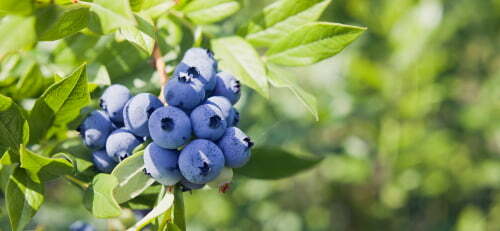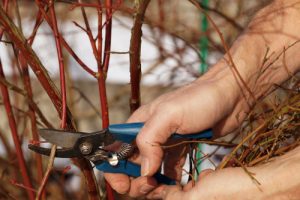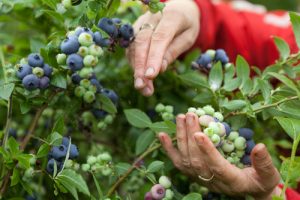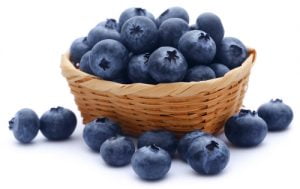
What is a blueberry?
The blueberry is any one of several North American shrubs of the plant genus ‘Vaccinium’. Prized for their sweet edible fruits, in recent times the blueberry has been hailed as a “superfood”. It’s also known as an excellent source of dietary fibre, vitamin C, vitamin K, manganese, iron, and a number of other antioxidants. Recent medical studies have suggested that blueberries can lower blood pressure, as well as help in the fight against heart disease and diabetes, although such claims to date, remain largely unproven.
Blueberries are closely related to cranberries and bilberries, also members of the genus Vaccinium, the latter being sometimes referred to as the European blueberry. In the UK, blueberries continue to grow in popularity. Since May last year, over £400m worth of British blueberries. In total, 41,000 tonnes of blueberries. About a 10% increase on the previous year.
How to grow Blueberries
Soil preparation
Blueberries require light, free-draining acidic soils, with plenty of rich, organic matter if they’re to thrive. The soil should have a lower pH of between 4 and 5.5, similar to the requirements of rhododendrons and camellias. It’s possible to lower the pH levels of your soil with sulphur chips or dust. However, they’ll need to be added three weeks before planting to take effect.
Monitor the soil’s pH every few years, because it may be necessary to add acid. If you don’t have suitable soil, simply grow blueberries in a pot containing ericaceous compost, giving the plants a high potash feed (such as tomato feed) occasionally during the growing season.
Planting
Growing a single species of blueberry plant will produce fruit. However, fruit yields will be higher, with bigger and better-quality berries, if more than one type of plant is grown due to cross-pollination. And, while blueberries can tolerate shade, the best crops are obtained from plants that have maximum exposure to the sun.
Plant blueberry bushes in autumn or winter, leaving about 1.5m (5ft) gaps between plants. Mulch the plant with a layer of acidic peat, wood chippings or pine needles. Water well, using rainwater rather than tap water as the latter contains lime, which will render the soil less acidic over time.

Maintenance
Birds are the main pest of blueberries so erect netting over the bushes as soon as the fruit starts to show any sign of colouring. Place an acidic organic mulch, such as pine needles or composted conifer clippings, around the plants in spring. Plants require watering, on a regular basis, from when buds first appear in spring, up until leaves begin to fall in autumn. When and wherever possible, rainwater should be used in preference to tap water.
Harvesting
Blueberry fruits grow in clusters that ripen at different times, so pick regularly over the ripening period. The initially green berries are ready to pick when they have turned a deep blue. The fruit will easily pull away from the cluster when ripe. Leaving them on the bush for a few more days after they have ripened will add flavour. The fruit can be eaten fresh or can be dried, frozen, made into preserves or used to make desserts.

Pruning
Blueberries produce fruit on the branches that grew the previous year. In the first 2 or 3 years after planting, bushes will only require absolute minimal pruning. After that, pruning is required on a regular basis in order to maintain the bush’s vitality and the production of high-quality berries.
Cut away any dead, diseased, damaged, dying or weak canes. And, since old canes don’t produce much fruit, remove 2 or 3 of the oldest canes from the base of the plant each year to make way for younger, more productive ones. Additionally, prune out any low branches that look as if they may lay on the ground, once laden with fruit. Also, prune the twiggy growth at the end of the branches that fruited last year, cutting back to a strong, upward-facing bud or branch.
Pruning can take place any time between November and March when the plant is dormant. However, late February to early March is the ideal time, when fruit buds and leaf buds are easily distinguishable.
Popular Varieties:
- Earliblue – a robust, early ripening variety, that produces sweet, medium to large, light-blue berries
- Patriot – a high-yielding, robust and hardy variety, that produces, flavoursome, medium to large berries
- Herbert – a moderately robust variety, that produces some of the largest and most flavoursome of all berries
- Coville – robust, very end-of-season variety, that produces large fruit that can be left on the bush for a long time before dropping
If you’ve enjoyed reading this article, why not click on the link to Hobbies and Pastimes, to see if there’s anything else that takes your interest?






